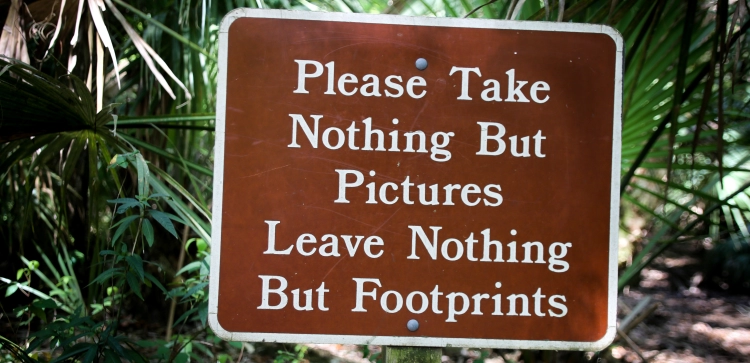What's The Significance Of Ethics In Climbing?

Climbing, beyond its physical challenges, is a community-driven pursuit steeped in tradition, respect, and a set of guiding principles known as climbing ethics. These ethics form the moral compass of the climbing community, influencing behavior, conservation efforts, and the overall impact climbers have on the natural environment. In this comprehensive guide, we'll delve into the profound significance of ethics in climbing, examining their role in fostering a sustainable climbing culture and preserving the sanctity of climbing landscapes.
- The Foundations Of Climbing Ethics
- Environmental Stewardship: Conservation And Advocacy
- Conservation Efforts: Protecting Fragile Ecosystems
- Access Advocacy: Balancing Recreation And Conservation
- Human Interactions And Safety
- Communication And Courtesy: Navigating Crowded Climbing Areas
- Safety And Preparedness: A Moral Obligation
- Cultural Respect And Preservation
- Addressing Common Questions And Concerns
- How Can Climbers Contribute To Conservation?
- Is Bolting Ever Ethical?
- How Can Climbing Communities Advocate For Access?
- Conclusion: Climbing Ethics As A Guiding Light
The Foundations of Climbing Ethics
Leave No Trace: Treading Lightly on Nature
At the core of climbing ethics lies the principle of "Leave No Trace." Climbers are urged to minimize their impact on the environment by following practices that leave the natural landscape unaltered. This includes packing out all waste, avoiding damage to vegetation, and respecting wildlife habitats. Leave No Trace principles ensure that climbing areas remain pristine for future generations.
Minimalist Anchoring: Respecting Natural Features
Ethics in climbing emphasize minimalist anchoring practices, encouraging climbers to utilize existing natural features for protection whenever possible. This minimizes the need for bolting and helps preserve the integrity of rock formations. Climbers are urged to exercise restraint in placing new anchors, prioritizing the conservation of climbing areas.
Environmental Stewardship: Conservation and Advocacy
Conservation Efforts: Protecting Fragile Ecosystems
Climbing ethics extend beyond individual actions to collective conservation efforts. Climbing communities often engage in projects aimed at protecting fragile ecosystems, restoring damaged areas, and advocating for the preservation of climbing habitats. Environmental stewardship is a shared responsibility that aligns with the ethos of respecting and caring for the natural world.
Access Advocacy: Balancing Recreation and Conservation
Balancing climbing access with conservation is a delicate dance, and climbing ethics play a pivotal role in advocacy efforts. Climbing communities collaborate with land managers, environmental organizations, and local communities to ensure responsible access to climbing areas. Ethical practices foster positive relationships and contribute to the sustainability of climbing access.
Human Interactions and Safety
Communication and Courtesy: Navigating Crowded Climbing Areas
Climbing ethics extend to human interactions on the rock. Effective communication and courtesy are essential, especially in crowded climbing areas. Clarity in communication, sharing routes, and respecting others' space contribute to a positive climbing environment. Climbers are encouraged to be considerate of fellow enthusiasts, fostering a sense of community and camaraderie.
Safety and Preparedness: A Moral Obligation
Safety is not just a personal responsibility but a moral obligation in climbing ethics. Climbers are urged to prioritize their safety and the safety of others by adhering to established safety protocols, using reliable equipment, and staying informed about potential risks. A commitment to safety reflects a respect for life and the well-being of the climbing community.
Cultural Respect and Preservation
Cultural Sensitivity: Respecting Local Traditions
Climbing often takes place in diverse cultural landscapes, and climbing ethics emphasize cultural sensitivity. Climbers are urged to respect local traditions, customs, and sacred sites. Building positive relationships with local communities fosters a harmonious coexistence between climbers and the cultures surrounding climbing areas.
Historic Preservation: Honoring Climbing Heritage
Climbing ethics extend to the preservation of climbing history. Historic routes, climbing artifacts, and iconic climbing locations hold cultural significance. Climbers are encouraged to honor the heritage of climbing by respecting historic routes, avoiding unnecessary alterations, and celebrating the rich legacy of climbing achievements.
Addressing Common Questions and Concerns
How Can Climbers Contribute to Conservation?
Climbers can contribute to conservation by participating in organized clean-up events, supporting local environmental initiatives, and practicing Leave No Trace principles. Volunteering time and resources to conservation efforts ensures that climbers actively contribute to the preservation of natural climbing areas.
Is Bolting Ever Ethical?
Bolting is a nuanced aspect of climbing ethics and is typically approached with caution. Climbers consider the impact on the environment, the consensus of the climbing community, and the sustainability of the climbing area before bolting. Ethical bolting practices prioritize minimal environmental impact and the preservation of the climbing landscape.
How Can Climbing Communities Advocate for Access?
Climbing communities can advocate for access by engaging in dialogue with land managers, collaborating with conservation organizations, and educating the public about responsible climbing practices. Building positive relationships and demonstrating a commitment to ethical climbing practices enhance the credibility of climbing communities in access advocacy.
Conclusion: Climbing Ethics as a Guiding Light
In the world of climbing, ethics serve as a guiding light, shaping the behaviors and values of the climbing community. From environmental stewardship and safety to cultural respect and historic preservation, climbing ethics embody a commitment to a holistic and sustainable climbing culture. As climbers navigate vertical landscapes, the profound significance of ethics becomes evident—an unwavering commitment to preserving the beauty of nature, fostering community bonds, and leaving a positive legacy for future generations. Upholding climbing ethics is not just a responsibility; it's a shared commitment to the soul of climbing itself.











